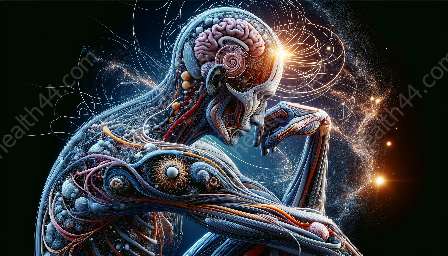Developmental anatomy is a fascinating field that explores how the human body grows and changes from conception to adulthood. This intricate process is fundamental to understanding the complexities of human anatomy, health foundations, and medical research. In this topic cluster, we will delve into the wonders of developmental anatomy and its crucial role in shaping our understanding of the human body and its intricate development.
The Foundations of Developmental Anatomy
At the core of developmental anatomy lies the study of how organs, tissues, and systems form and mature within the human body. This field unravels the mysteries of embryonic development, fetal growth, and postnatal transformation, shedding light on the intricate processes that shape human life from its earliest stages.
Embryonic Development: A Symphony of Formation
Embryonic development is a mesmerizing journey that begins with the fusion of egg and sperm, leading to the formation of a zygote. As this tiny entity undergoes cell division and differentiation, it gives rise to the diverse tissues and structures that constitute the human body. Developmental anatomy uncovers the orchestration of this symphony of formation, unveiling the intricate pathways that guide the creation of vital organs and systems.
Fetal Growth and Maturation: Nurturing the Miracle of Life
As the embryo evolves into a fetus, its growth and maturation are closely monitored by developmental anatomy. This phase of development encompasses the intricate formation of organs, the emergence of identifiable features, and the gradual strengthening of bodily functions. From the emergence of limb buds to the patterning of the central nervous system, fetal growth epitomizes the awe-inspiring complexity of human development.
Postnatal Transformation: Adapting to a Dynamic World
Once born, the human body embarks on a journey of adaptation and growth, navigating the ever-changing landscape of the external environment. Developmental anatomy explores the postnatal transformation of the human body, examining the maturation of bodily systems, the development of motor skills, and the progressive refinement of cognitive abilities. This phase of development marks the continuation of the miraculous process that began in the womb.
Intersections with Anatomy, Health, and Medical Research
Developmental anatomy intersects with various domains, enriching our understanding of anatomy, laying the foundation for healthcare, and fueling advancements in medical research.
Understanding Anatomy through Development
By studying the intricate timelines of organ formation and growth, developmental anatomy provides critical insights into the structural complexities of the human body. This understanding forms the bedrock of anatomical knowledge, informing healthcare professionals and researchers as they navigate the intricacies of human anatomy and physiology.
Shaping Health Foundations with Developmental Insight
The insights gleaned from developmental anatomy contribute to the establishment of robust health foundations. From prenatal care to pediatric medicine, understanding the intricacies of human growth equips healthcare practitioners with the knowledge needed to support healthy development and address challenges that may arise during various stages of life.
Driving Innovations in Medical Research
Medical research thrives on the discoveries and revelations that emerge from developmental anatomy. By unraveling the mechanisms of human development, researchers gain valuable insights into genetic disorders, developmental abnormalities, and potential therapeutic interventions. These findings drive innovations in medical research, paving the way for breakthroughs in fields ranging from regenerative medicine to developmental biology.
Exploring the Frontiers of Developmental Anatomy
As we venture into the frontiers of developmental anatomy, the complexities of human growth come to the forefront, offering new avenues for exploration and understanding.
The Role of Genetics and Environment in Development
Developmental anatomy delves into the intricate interplay between genetics and the environment, unraveling how these factors shape human development. From genetic predispositions to environmental influences, this field sheds light on the multifaceted nature of human growth and the interactions that sculpt our biological trajectories.
The Impact of Developmental Anomalies on Health
By examining developmental anomalies and disruptions, developmental anatomy offers critical insights into the impact of these occurrences on health and well-being. Understanding the consequences of developmental aberrations is essential for diagnosing and treating conditions that arise as a result of disrupted growth processes.
Paving the Way for Future Advancements
Through ongoing research and exploration, developmental anatomy acts as a catalyst for future advancements in healthcare and medical interventions. By unraveling the intricacies of human growth and development, this field lays the groundwork for innovative approaches to addressing health challenges and understanding the remarkable journey from conception to adulthood.


